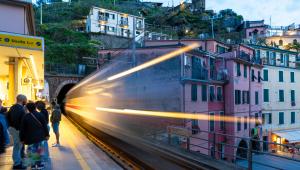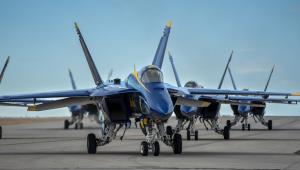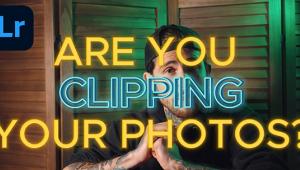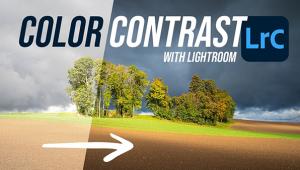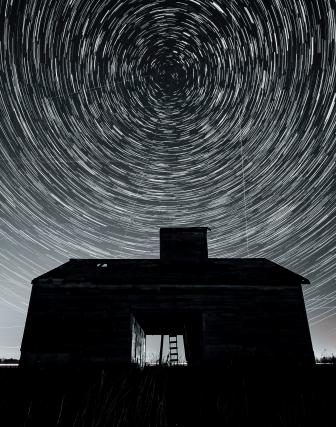You Are Your Custom Lab
While grammatically awkward, the headline on this column pretty much sums up
how digital has changed our relationship with our prints. While many photographers
have always made an effort to develop their own black and white film and make
their own custom-crafted prints, quite a few less bothered making their own
color prints, and only a handful might have developed their own color film.
Yes, there were stalwarts who developed their own E-6, but how many people do
you know who souped their own color negative film in C-41? Well, the way things
have changed it's as if every photographer just went super critical and
started doing just that, except now it's processing raw files and not
color negative film.
 The same goes for prints. If you shot color negative film in the past you'd
drop the film off at the lab, wait the requisite time, and then go back and
open the envelope to inspect your prints. You knew that some were too dark or
too bright, or even off-color a bit, and sometimes you complained and sometimes
you shrugged and walked away, knowing that any set of prints were always proofs,
approximations of color and brightness more often determined by the vagaries
of the lab than how you intended the pictures to come out. And for those who
didn't know their stuff and got lousy prints back from the lab, more often
than not the lab personnel would put the onus on the customer, and not on the
fact that they forgot to replenish their bleach/fix solution for a couple of
days. (I once got back reversed (negative) slides from a lab that told me I
opened the camera before rewinding, thus "solarized" the film.)
The same goes for prints. If you shot color negative film in the past you'd
drop the film off at the lab, wait the requisite time, and then go back and
open the envelope to inspect your prints. You knew that some were too dark or
too bright, or even off-color a bit, and sometimes you complained and sometimes
you shrugged and walked away, knowing that any set of prints were always proofs,
approximations of color and brightness more often determined by the vagaries
of the lab than how you intended the pictures to come out. And for those who
didn't know their stuff and got lousy prints back from the lab, more often
than not the lab personnel would put the onus on the customer, and not on the
fact that they forgot to replenish their bleach/fix solution for a couple of
days. (I once got back reversed (negative) slides from a lab that told me I
opened the camera before rewinding, thus "solarized" the film.)
The same goes for custom prints, enlargements we'd make at pro labs where we'd sit with the lab personnel and circle out where burning and dodging should be done, and how color balance should go cooler or warmer. Now that we have control over every element of an image we can, if we desire, become our own custom lab. We can apply every foible and fancy we want to our print, assuring complete satisfaction and avoiding making lab personnel nuts because they couldn't read our mind about an extra 10 percent of density in the upper right corner of the frame. (Believe me, I've been there, on the lab side, that is.)
It all starts, of course, with proper exposure and focusing techniques. It then rolls through raw processing and conversion, the modern custom-developing technique. But raw isn't just push or pull processing, or using a high-speed or acutance developer--it's all that rolled into one, and more. It has inspired an entirely new way of dealing with the image, and I believe the mindset it inspires will continue to change photography in ways we can't even imagine today. Limitations of illumination, color, and even sharpness will all be reconsidered as new processing techniques are developed and enhanced.
Printing has undergone a similar revolution, with new and fairly affordable desktop and even small studio printers changing the way we all relate to getting our own work on paper. And of course software and the continuing evolution of capabilities completes the set.
Having been at this game for a while I can certainly attest to the radical change this all represents, but that goes without saying. What has really changed, and what will continue to evolve, is the relationship between the photographer and his or her work. This is a new mindset, one that we have never seen before. It is personal and professional at the same time. Given a dedication to learning, and investment in time and money, it can elevate a photographer into another realm of creativity that was unheard of in the past. You are your own custom lab.

 The same goes for prints. If you shot color negative film in the past you'd
drop the film off at the lab, wait the requisite time, and then go back and
open the envelope to inspect your prints. You knew that some were too dark or
too bright, or even off-color a bit, and sometimes you complained and sometimes
you shrugged and walked away, knowing that any set of prints were always proofs,
approximations of color and brightness more often determined by the vagaries
of the lab than how you intended the pictures to come out. And for those who
didn't know their stuff and got lousy prints back from the lab, more often
than not the lab personnel would put the onus on the customer, and not on the
fact that they forgot to replenish their bleach/fix solution for a couple of
days. (I once got back reversed (negative) slides from a lab that told me I
opened the camera before rewinding, thus "solarized" the film.)
The same goes for prints. If you shot color negative film in the past you'd
drop the film off at the lab, wait the requisite time, and then go back and
open the envelope to inspect your prints. You knew that some were too dark or
too bright, or even off-color a bit, and sometimes you complained and sometimes
you shrugged and walked away, knowing that any set of prints were always proofs,
approximations of color and brightness more often determined by the vagaries
of the lab than how you intended the pictures to come out. And for those who
didn't know their stuff and got lousy prints back from the lab, more often
than not the lab personnel would put the onus on the customer, and not on the
fact that they forgot to replenish their bleach/fix solution for a couple of
days. (I once got back reversed (negative) slides from a lab that told me I
opened the camera before rewinding, thus "solarized" the film.)The same goes for custom prints, enlargements we'd make at pro labs where we'd sit with the lab personnel and circle out where burning and dodging should be done, and how color balance should go cooler or warmer. Now that we have control over every element of an image we can, if we desire, become our own custom lab. We can apply every foible and fancy we want to our print, assuring complete satisfaction and avoiding making lab personnel nuts because they couldn't read our mind about an extra 10 percent of density in the upper right corner of the frame. (Believe me, I've been there, on the lab side, that is.)
It all starts, of course, with proper exposure and focusing techniques. It then rolls through raw processing and conversion, the modern custom-developing technique. But raw isn't just push or pull processing, or using a high-speed or acutance developer--it's all that rolled into one, and more. It has inspired an entirely new way of dealing with the image, and I believe the mindset it inspires will continue to change photography in ways we can't even imagine today. Limitations of illumination, color, and even sharpness will all be reconsidered as new processing techniques are developed and enhanced.
Printing has undergone a similar revolution, with new and fairly affordable desktop and even small studio printers changing the way we all relate to getting our own work on paper. And of course software and the continuing evolution of capabilities completes the set.
Having been at this game for a while I can certainly attest to the radical change this all represents, but that goes without saying. What has really changed, and what will continue to evolve, is the relationship between the photographer and his or her work. This is a new mindset, one that we have never seen before. It is personal and professional at the same time. Given a dedication to learning, and investment in time and money, it can elevate a photographer into another realm of creativity that was unheard of in the past. You are your own custom lab.

- Log in or register to post comments














